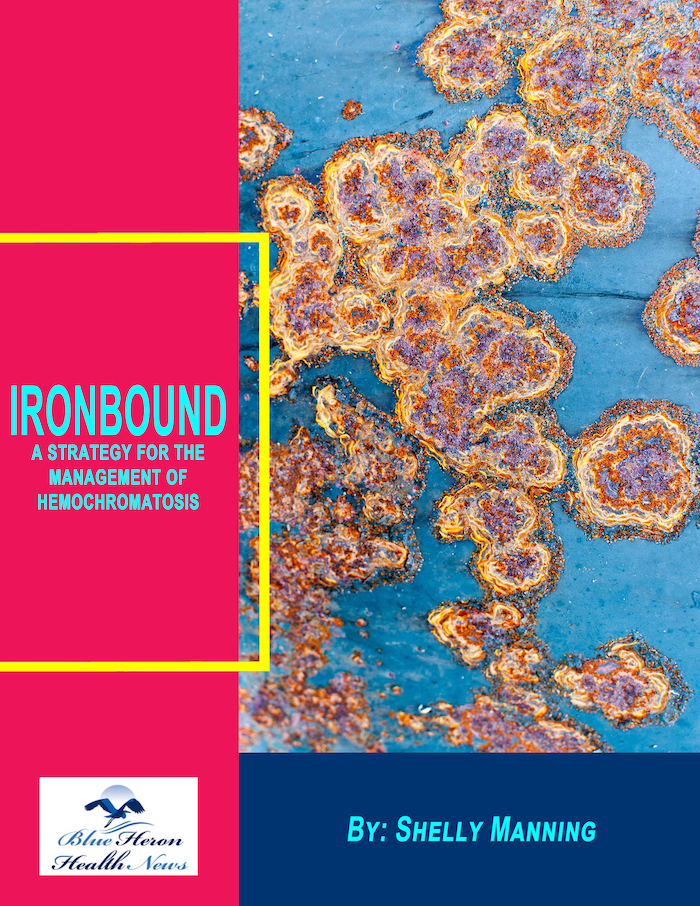
Ironbound™ A Strategy For The Management Of Hemochromatosis By Shelly Manning The 5 superfoods explained by Shelly Manning in this eBook play an important role in reducing the levels of HCT. The absorption of the excessive amount of iron by the genes of HCT can be blocked by these superfoods. In this way, the information provided in this eBook can help in resolving the problem of excess iron in your body naturally without any risk of side effects.
What are the genetic mutations associated with hereditary hemochromatosis?
Genetic Mutations Associated with Hereditary Hemochromatosis
Hereditary hemochromatosis (HH) is a genetic disorder characterized by excessive iron accumulation in the body, which can lead to organ damage. It is primarily caused by mutations in the HFE gene, but other non-HFE gene mutations can also contribute to the condition. Here’s a detailed overview of the genetic mutations associated with hereditary hemochromatosis:
1. HFE Gene Mutations
The HFE gene is the most common gene associated with hereditary hemochromatosis. It encodes a protein involved in regulating iron absorption.
A. C282Y Mutation
- Description: The C282Y mutation involves a substitution of tyrosine for cysteine at position 282 of the HFE protein.
- Prevalence: This is the most common mutation associated with HH, particularly in individuals of Northern European descent.
- Pathophysiology: Homozygosity for C282Y (having two copies of the C282Y mutation) is the most common cause of hereditary hemochromatosis. This mutation impairs the interaction between the HFE protein and beta-2 microglobulin, disrupting iron regulation and leading to increased iron absorption.
B. H63D Mutation
- Description: The H63D mutation involves a substitution of aspartic acid for histidine at position 63 of the HFE protein.
- Prevalence: This mutation is less common than C282Y and is often found in a heterozygous state (one copy of H63D).
- Pathophysiology: Homozygosity for H63D or compound heterozygosity (one copy of H63D and one copy of C282Y) can cause a milder form of hemochromatosis compared to C282Y homozygosity.
C. S65C Mutation
- Description: The S65C mutation involves a substitution of cysteine for serine at position 65 of the HFE protein.
- Prevalence: This mutation is rare and typically considered to have a minor impact on iron overload when present alone.
- Pathophysiology: S65C, especially when in combination with another HFE mutation like C282Y, can contribute to a mild increase in iron absorption.
2. Non-HFE Gene Mutations
In addition to the HFE gene, mutations in several other genes can also cause hereditary hemochromatosis. These mutations are associated with different types of hemochromatosis.
A. Hemojuvelin (HJV) Gene (Type 2A Hemochromatosis)
- Description: Mutations in the HJV gene, also known as HFE2, cause juvenile hemochromatosis, a severe form of iron overload that presents in childhood or early adulthood.
- Prevalence: Rare.
- Pathophysiology: HJV mutations lead to decreased production of hepcidin, a hormone that regulates iron absorption, resulting in severe iron overload.
B. Hepcidin (HAMP) Gene (Type 2B Hemochromatosis)
- Description: Mutations in the HAMP gene cause another form of juvenile hemochromatosis.
- Prevalence: Very rare.
- Pathophysiology: HAMP mutations impair the production of hepcidin, leading to uncontrolled iron absorption and severe iron overload.
C. Transferrin Receptor 2 (TFR2) Gene (Type 3 Hemochromatosis)
- Description: Mutations in the TFR2 gene cause a form of adult-onset hemochromatosis.
- Prevalence: Rare.
- Pathophysiology: TFR2 mutations affect iron sensing and regulation, leading to increased iron absorption and accumulation.
D. Ferroportin (SLC40A1) Gene (Type 4 Hemochromatosis)
- Description: Mutations in the SLC40A1 gene, which encodes ferroportin, cause a form of hemochromatosis also known as ferroportin disease or autosomal dominant hemochromatosis.
- Prevalence: Rare.
- Pathophysiology: Ferroportin mutations affect iron export from cells, leading to iron accumulation, particularly in macrophages, and a different pattern of iron overload compared to other forms.
Diagnosis and Genetic Testing
A. Clinical Presentation and Initial Testing
- Symptoms: Symptoms of HH can include fatigue, joint pain, abdominal pain, liver disease, diabetes, skin discoloration, and heart disease.
- Serum Ferritin and Transferrin Saturation: Elevated levels of serum ferritin and transferrin saturation are initial indicators of iron overload.
B. Genetic Testing
- HFE Gene Testing: Genetic testing for HFE mutations (C282Y, H63D, S65C) is commonly performed to confirm the diagnosis of HH.
- Non-HFE Gene Testing: If HFE testing is negative but clinical suspicion remains high, testing for mutations in non-HFE genes (HJV, HAMP, TFR2, SLC40A1) may be considered.
Management and Treatment
A. Phlebotomy
- Mechanism: Regular blood removal to reduce iron levels.
- Frequency: Initially, phlebotomies may be performed weekly until iron levels normalize, followed by maintenance phlebotomies.
B. Iron Chelation Therapy
- Use: For patients who cannot tolerate phlebotomy or have severe iron overload.
- Medications: Deferoxamine, deferasirox, and deferiprone.
C. Dietary Management
- Recommendations: Avoid iron supplements and limit dietary iron intake. Reduce consumption of vitamin C supplements, which increase iron absorption, and alcohol, which can exacerbate liver damage.
D. Monitoring and Follow-Up
- Regular Monitoring: Regular monitoring of iron levels, liver function, and other relevant parameters is essential to manage the condition effectively.
Conclusion
Hereditary hemochromatosis is primarily caused by mutations in the HFE gene, particularly the C282Y and H63D mutations. Other genetic mutations in non-HFE genes (HJV, HAMP, TFR2, and SLC40A1) can also lead to different types of hemochromatosis. Understanding these genetic mutations is crucial for diagnosing and managing the condition. Genetic testing, regular monitoring, and appropriate treatment strategies, including phlebotomy and dietary management, are essential to prevent complications and improve patient outcomes.
Ironbound™ A Strategy For The Management Of Hemochromatosis By Shelly Manning The 5 superfoods explained by Shelly Manning in this eBook play an important role in reducing the levels of HCT. The absorption of the excessive amount of iron by the genes of HCT can be blocked by these superfoods. In this way, the information provided in this eBook can help in resolving the problem of excess iron in your body naturally without any risk of side effects.
